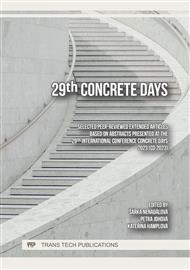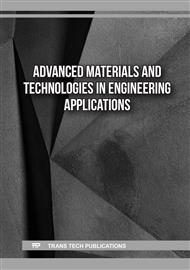p.25
p.31
p.39
p.45
p.53
p.63
p.69
p.75
p.85
Rheological Properties and Segregation of Fresh UHPC with Fibers Affected by Initial Temperature of Concrete Mix
Abstract:
Within the framework of the project GAČR 21-24070S Model of fibre segregation in dependence on rheological properties of fresh HPC, the rheological properties and fibre segregation in fresh concrete mix depending on temperature changes have been verified. The rheological properties and fibre segregation have been verified under three temperature conditions (very low temperatures around 5 °C, normal temperature conditions around 20 °C and high temperatures above 30 °C). Comparison of the properties of UHPC with fibres at different temperature conditions has been performed on fresh mixtures mainly by spill tests. Subsequently, hardened test bodies, i.e. 40/40/160 beams, were verified in tensile bending and compression in all cases. The actual fibre segregation within the individual samples has also been verified by microscopic analysis. Different temperature conditions have been simulated by heating or cooling the input raw materials. The results have been compared by degree of changes in rheological properties and mechanical parameters.
Info:
Periodical:
Pages:
53-59
Citation:
Online since:
March 2024
Authors:
Keywords:
Price:
Сopyright:
© 2024 Trans Tech Publications Ltd. All Rights Reserved
Share:
Citation:



